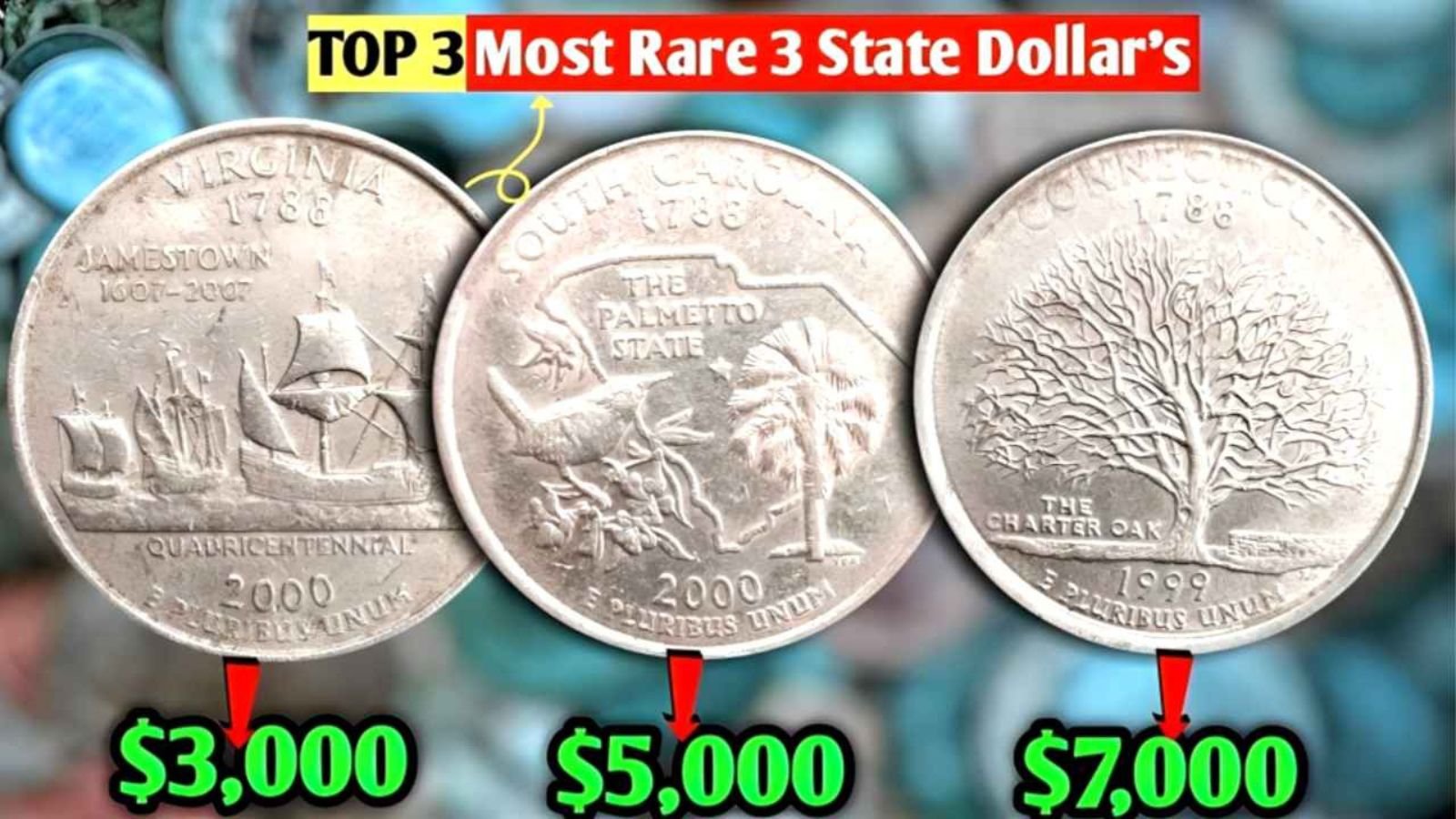The Bicentennial Quarter remains one of the most iconic and beloved coins in American numismatic history. Minted in celebration of the 200th anniversary of the United States’ independence in 1776, this unique quarter was released in 1975 and 1976, standing out due to its historic significance and distinctive design. While millions of these coins were produced, a select few have risen far above face value, becoming highly sought-after by collectors around the world. In fact, some Rare Bicentennial Quarters have fetched astonishing prices—ranging from thousands to even millions of dollars. But what makes these particular coins so valuable?
Let’s take a closer look into the fascinating world of Rare Bicentennial Quarters, uncovering which ones are worth a fortune, the reasons behind their high value, and what to watch for if you’re hoping to strike gold with one in your collection or pocket change.
Why the Bicentennial Quarter Is So Special
To understand why certain Rare Bicentennial Quarters are worth so much, it helps to start with the history behind them. The U.S. Mint, in a rare move, altered the design of its circulating quarters in honor of the country’s 200th birthday. While the obverse (front) still displayed the familiar profile of George Washington, the reverse was changed to feature a colonial drummer and a torch encircled by thirteen stars, representing the original thirteen colonies.
The inscription was also updated to read “1776–1976,” rather than just a single year of issue. These commemorative quarters were issued for general circulation, but some were struck in special sets using silver or produced in limited numbers with minting errors—factors that have now made them extremely collectible.
Although most Bicentennial Quarters remain at face value, certain rare variants—due to unique minting qualities or errors—are now commanding top dollar among collectors. These are the Rare Bicentennial Quarters that every numismatist dreams of finding.
1. The 1976-S Silver Proof Bicentennial Quarter
Among the most coveted of all Rare Bicentennial Quarters is the 1976-S Silver Proof Bicentennial Quarter. Unlike its copper-nickel counterparts found in circulation, this quarter was struck in 40% silver and offered exclusively in special collector’s sets sold directly by the U.S. Mint.
Why It’s Valuable
The combination of limited mintage and high-quality striking makes this coin immensely desirable. Only about 4 million of these silver proof sets were produced. Since they were never intended for circulation, finding one in perfect or near-perfect condition is still quite possible, making it a staple among serious collectors.
Market Value
A high-grade specimen, especially one graded PR69 or PR70 by a reputable grading service, can easily command $5,000 to $10,000 at auction. Some have even sold for more, especially when accompanied by original government packaging or if part of a complete silver proof set.
2. The 1976-D Double Die Obverse Quarter
One of the most elusive and valuable Rare Bicentennial Quarters is the 1976-D Double Die Obverse. Double die errors occur when the die used to strike the coin has a duplication on its surface, resulting in doubling of the design elements. In this case, the error is noticeable on the front of the coin, particularly around the inscriptions “LIBERTY,” “IN GOD WE TRUST,” and the date.
Why Collectors Prize This Coin
Double die errors are inherently rare and often only a few hundred examples are discovered before the mint identifies and corrects the mistake. The 1976-D Double Die Obverse Quarter is no exception, and its rarity adds a significant premium to its value.
Current Value
Depending on its condition, this coin can fetch between $10,000 and $25,000. Uncirculated examples with high Mint State (MS) grades—especially MS66 and above—are among the most valuable Rare Bicentennial Quarters in the collector’s market today.
3. The 1976-P Bicentennial Quarter with a Clad Layer Error
Another standout in the world of Rare Bicentennial Quarters is the 1976-P Quarter with a Clad Layer Error. This coin’s value comes not from rarity in mintage but from a mistake in the manufacturing process. The clad layer error results in missing or improperly bonded layers, making the coin appear discolored, thin, or uneven.
What Makes This Coin Unique
Normally, quarters are produced from a copper core layered with nickel. However, in rare cases, the bonding fails, leading to coins that are partially or entirely missing a layer. This anomaly is fascinating to collectors because it reveals the imperfections and human errors in what should be a precise minting process.
What It’s Worth
Coins exhibiting severe cladding errors can sell for $1,000 to $5,000, depending on the visibility and severity of the mistake. The more dramatic and rare the flaw, the higher the potential value. These are excellent examples of how errors can turn an ordinary Bicentennial Quarter into a valuable treasure.
What Makes Rare Bicentennial Quarters So Valuable?
You may still be wondering why only some of these quarters—when millions were produced—are worth a fortune. Here are several key factors that determine the value of Rare Bicentennial Quarters:
1. Minting Errors
As highlighted above, errors such as double dies, off-center strikes, and clad layer mistakes make a coin stand out. These are unintended and rare, increasing their appeal to collectors.
2. Composition
Coins made from silver are almost always worth more due to their intrinsic metal value and lower mintages. The 1976-S Silver Proof, for example, benefits from both precious metal content and collector demand.
3. Condition and Grading
Coins that have remained untouched, retaining their original luster and free from blemishes or wear, fetch the highest prices. Getting a coin professionally graded by services like PCGS or NGC increases buyer confidence and can substantially boost value.
4. Collector Demand
While rarity is essential, demand is equally important. The Bicentennial Quarter holds a nostalgic place in American culture. It symbolizes a major historical milestone and is often a collector’s first commemorative coin, ensuring consistent demand in the numismatic community.
5. Historical Significance
Bicentennial coins celebrate one of the most pivotal events in U.S. history. Their design and context naturally draw attention from patriotic collectors, historians, and investors alike.
How to Spot Rare Bicentennial Quarters
If you want to check your own change or inherited coin collection for valuable quarters, here are some practical tips:
- Look Closely at the Date and Mintmark: The “S” mark indicates a proof or silver coin from San Francisco. “D” is from Denver and “P” from Philadelphia.
- Inspect for Errors: Use a magnifying glass to spot doubling in letters and numbers or signs of misstruck metal layers.
- Weigh the Coin: A silver quarter weighs slightly more than a clad one—about 6.25 grams versus 5.67 grams.
- Consider Professional Grading: If you believe your coin could be valuable, having it professionally graded is a wise move that can significantly increase its market appeal.
- Research and Compare: Check recent auction results and listings for coins similar to yours. Online databases and numismatic forums are excellent resources for staying up to date.
Conclusion: Could You Be Holding a Small Fortune?
The next time you sort through your loose change, don’t overlook those quarters bearing the colonial drummer on the reverse. You could be holding one of the Rare Bicentennial Quarters that collectors around the world are eager to add to their collections. While most are worth face value, the rare few with unique errors, silver composition, or exceptional preservation can be worth thousands—and in some cases, even more.
These coins are more than just currency; they are miniature pieces of American history, combining artistry, craftsmanship, and a legacy that spans generations. The Rare Bicentennial Quarters serve as a perfect reminder that incredible value can sometimes be hiding in plain sight—right in your pocket.
So, check your change carefully. That seemingly ordinary quarter might just be a rare gem waiting to be discovered. And if it happens to be one of the few extraordinary examples, you could be the next person to turn pocket change into a collector’s payday.
Some Important Link
| Telegram Group | Click Here |
| WhatsApp Group | Click Here |
| Home Page | Click Here |










